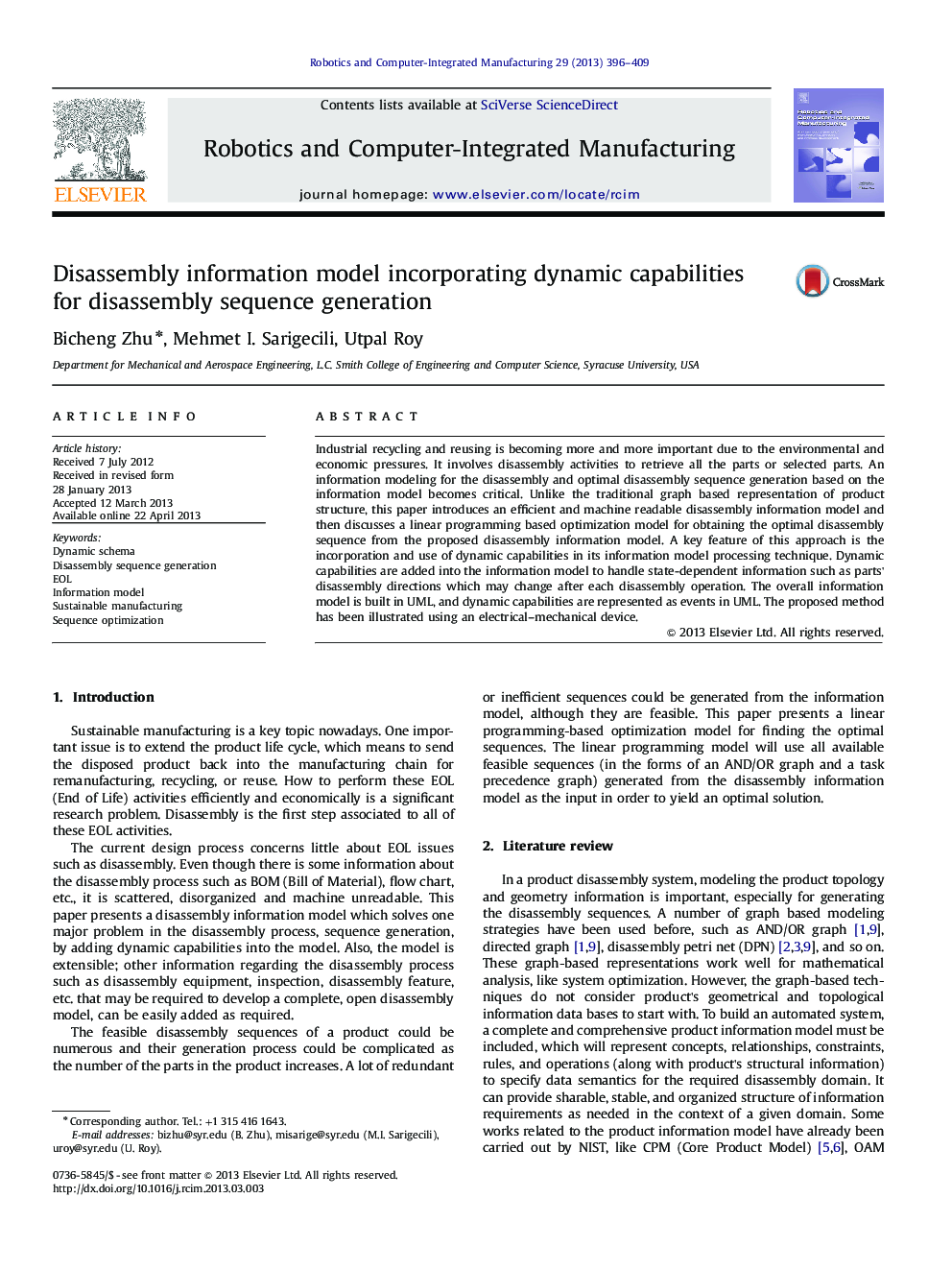| Article ID | Journal | Published Year | Pages | File Type |
|---|---|---|---|---|
| 413637 | Robotics and Computer-Integrated Manufacturing | 2013 | 14 Pages |
Highlight•Product disassembly sequence generation and optimization.•Disassembly information model for system integration.•Incorporating dynamic schema for instance manipulating.•Crucial for product life cycle activities.
Industrial recycling and reusing is becoming more and more important due to the environmental and economic pressures. It involves disassembly activities to retrieve all the parts or selected parts. An information modeling for the disassembly and optimal disassembly sequence generation based on the information model becomes critical. Unlike the traditional graph based representation of product structure, this paper introduces an efficient and machine readable disassembly information model and then discusses a linear programming based optimization model for obtaining the optimal disassembly sequence from the proposed disassembly information model. A key feature of this approach is the incorporation and use of dynamic capabilities in its information model processing technique. Dynamic capabilities are added into the information model to handle state-dependent information such as parts' disassembly directions which may change after each disassembly operation. The overall information model is built in UML, and dynamic capabilities are represented as events in UML. The proposed method has been illustrated using an electrical–mechanical device.
